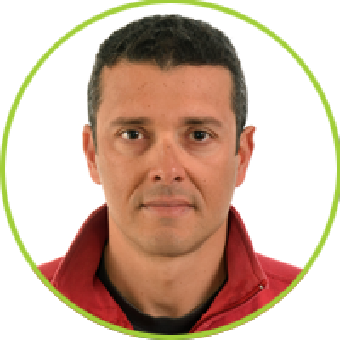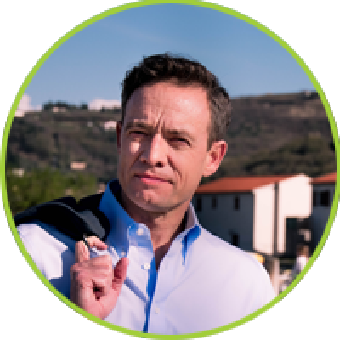Webinar on Sustainable Tourism in Protected Areas: from design to implementation – the experience of CEETO project.
May 8th 2020 - 11:00h (CET)
Previous registration required - Register.
The Central Europe Eco-Tourism: tools for nature protection (CEETO) Interreg project ran for three years, to test innovative governance models for tourism development in Protected Areas. Integrating environmental, social and economic aspects, several solutions were implemented in protected areas in Austria, Germany, Croatia, Slovenia and Italy, with the aim to make tourism a real driver for nature protection and local economic and social well-being.

In this webinar, jointly organised betwenn EUROPARC Federation and CEETO Interreg CE project, we will hear some of the best examples of the project implementation, and get access to relevant tools for Protected Area Managers and policy-makers to design and implement Sustainable Tourism Strategies in Protected Areas.
>>>>>>>>>>>>>>>>>>>>>>>>>>>>Register to the Webinar
Webinar Programme and Speakers
Introduction and Case Studies:
In this block, an overview of CEETO project and its objectives will be presented together with two case studies of Sustainable Tourism strategies design and implementation in two Protected Areas:

1. CEETO Interreg CE project overview
Learn how CEETO project has contributed to the development of Sustainable Tourism in European Protected Areas, its goals, structure and main outputs.
By Mauro Generalli – CEETO Communication andTechnical Manager at Emilia-Romagna Region - Protected Areas, Forestry and Mountains Development Department (project Lead Partner).
Geologist at the Emilia Romagna Region for about 18 years. Environmental Hiking Guide since 2017. From January 2018 Technical and Communication Manager in the CEETO Project Area, at the Protected Areas, Forests and Mountain Development Service of the Emilia Romagna Region, Lead Partner of the CEETO Project.

2. The Importance of Buffer Zones: Working with Public Authorities and Privates
As part of the activities within the CEETO project, a common strategy to foster the development of sustainable tourism in the protected area was developed during a participatory process including public authorities and privates. A buffer zone has been identified as an important tool to mitigate the impact of tourism on protected areas.
By Robert Smrekar, L.L.M. - Director of the Public Institute Landscape Park Strunjan, Slovenia.
As a lawyer with vast experience in civil and public law, has been able to identify all the necessary legal aspect of the integration of buffer zones in the communication process with various stakeholders, especially regarding spatial planning and required regulation changes.

3. Nirano’s Mud Vulcanos: Identifying visitor's profile with artificial intelligence.
In the framework of CEETO project, a Video Content Analysis (VCA) system – called NEMOS (Nature rEserve MOnitoring System) - was deployed and tested in the Integral Protected Zone of the “Salse di Nirano” Nature Reserve, Italy. By using Artificial Intelligence, NEMOS system records and provides spatial and temporal information on number of persons, vehiles and animals, density maps of the routes (heat maps) and record of events of trespassing physical barriers. This information is used to monitor the main threats existing in the Protected Area and develop mitigation measures accordingly.
By Rudy Melli – CEO and Co-founder at Vision-e Srl, Italy, Head of the VCA system.
After two years at AImageLab, the Computer Vision and AI research group of the University of Modena and Reggio Emilia, working on international projects, he cofounded Vision-e: a start-up company focused on bringing these technologies at state of the art in the industrial and service fields with innovative solutions. His skills cover the understanding of images such as object detection, people tracking, face recognition; he also has strong experience in integrating these technologies to create intelligent embedded systems and industrial devices.
Tools for Sustainable Tourism planning and governance in Protected Areas.
CEETO project has also been a great source of knowledge from which different tools have been designed to facilitate the work of Policy Makers and Protected Area Managers in planning and implementing Sustainable Tourism. Get to know the following tools:

4. CEETO Guidelines for Policy Makers.
A compendium of the project results, examples and recommendations on how to gain more knowledge and reduce the impact of tourism.
By Tina Primožic – CEETO Manager at Regionale development center Koper, Slovenia.
Tina Primožič graduated in geography. She joined RRC team as project Manager in 2011. Tina has experience in administrative and project management of EU projects oriented in planning at the sea and sustainable tourism and in preparing regional development plans. From 2017, she is responsible for the implementation of the project CEETO at the RRC Koper.

5. CEETO Manual for Protected Area Managers.
A reference guide containing basic information and useful tools to development Sustainable Tourism.
By Ana Krvarić - CEETO Project Coordinator at WWF Adria, Croatia.
Ana is an expert in EU project management, with experience in cooperating with public and private sector in the process of strategic planning and implementation, as well as in the protected areas management. Since 2017, Ana is the project coordinator for the Interreg CEETO Project at WWF Adria.
Invitation to CEETO Final Conference online
As CEETO project is approaching to its closure date, we would like to take this opportunity to invite you to participate in the CEETO Final Conference, in which the different project outputs will be presented along with a plenary session on Sustainable Tourism. Registrations are open and free of charge.
